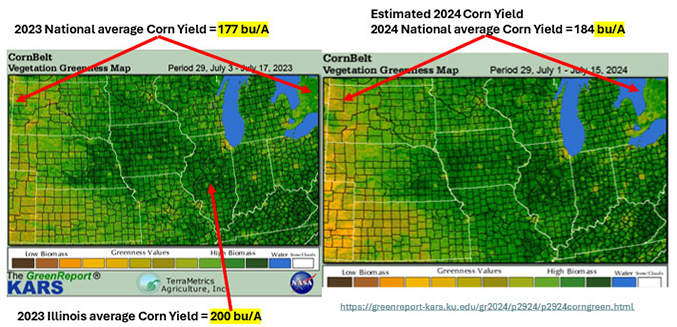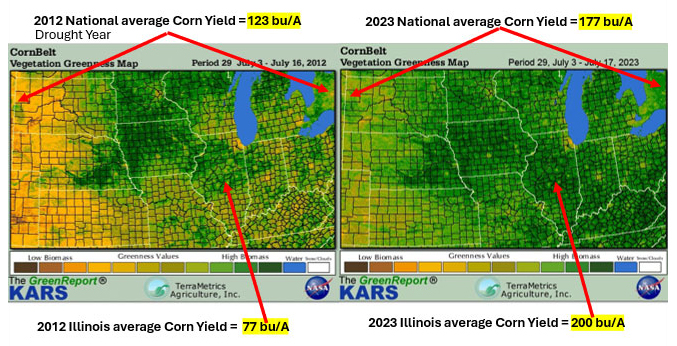Agronomist Corner - July 23, 2024
The 2024 growing season is again providing many yield-limiting weather events. Some of those events include:
- June, 2024 was the warmest month on record in the last 175 years
- After a very wet spring, crops now desperately need rain
- Extreme rainfall amounts have caused widespread flooding in parts of the Corn Belt
- No rain is in sight and record high temperatures pose a threat to Alabama, North Carolina, Virginia, east coast farmers face a catastrophic crop loss to unprecedented drought
TSI wants to introduce you to a tool you can easily access to see the current crop condition of the Corn Belt with the GreenReport®: https://greenreport-kars.ku.edu/index.shtml. In the spring of 1996 with funding from NASA and the Kansas Applied Remote Sensing Program at the University of Kansas, GreenReport® began producing a bi-weekly map series that measures vegetation conditions across the United States. The GreenReport® is produced using Normalized Difference Vegetation Index (NDVI ) images compiled at EROS Data Center from Advanced Very High Resolution Radiometer (AVHRR) imagery. Using these images, bi-weekly maps are created to illustrate current vegetation greenness and relative condition:
- Greenness Map - Illustrates locations and amounts of plant biomass. Dark green colors indicate areas containing abundant vegetation. Brown indicates sparse vegetation. The darker the green color the higher the biomass and thus the higher yield per acre.
- These two maps below compare the 2023 actual National average corn yield of 177 bu/A to the current estimated National average yield of 184 bu/A. You can check on the progress of the Corn crop by going to this website every two weeks and make your own estimate of the current yield. Even with all of the weather events impacting the 2024 crop as of mid-July, 2024 the potential for an excellent crop is still possible. Balanced crop nutrition is a key to helping crops handle drought and temperature extremes. Sulphur is the 4th major crop nutrient needed to provide balanced crop nutrition.
Source: https://greenreport-kars.ku.edu/gr2024/p2924/p2924corngreen.html

These two maps compare the drought of 2012 as of mid-July 2012 to the mid-July map of 2023. The drought of 2012 was widespread across the entire Corn Belt. The weather events of 2023 were not wide spread and thus the 2023 yield was near a new national average record.
